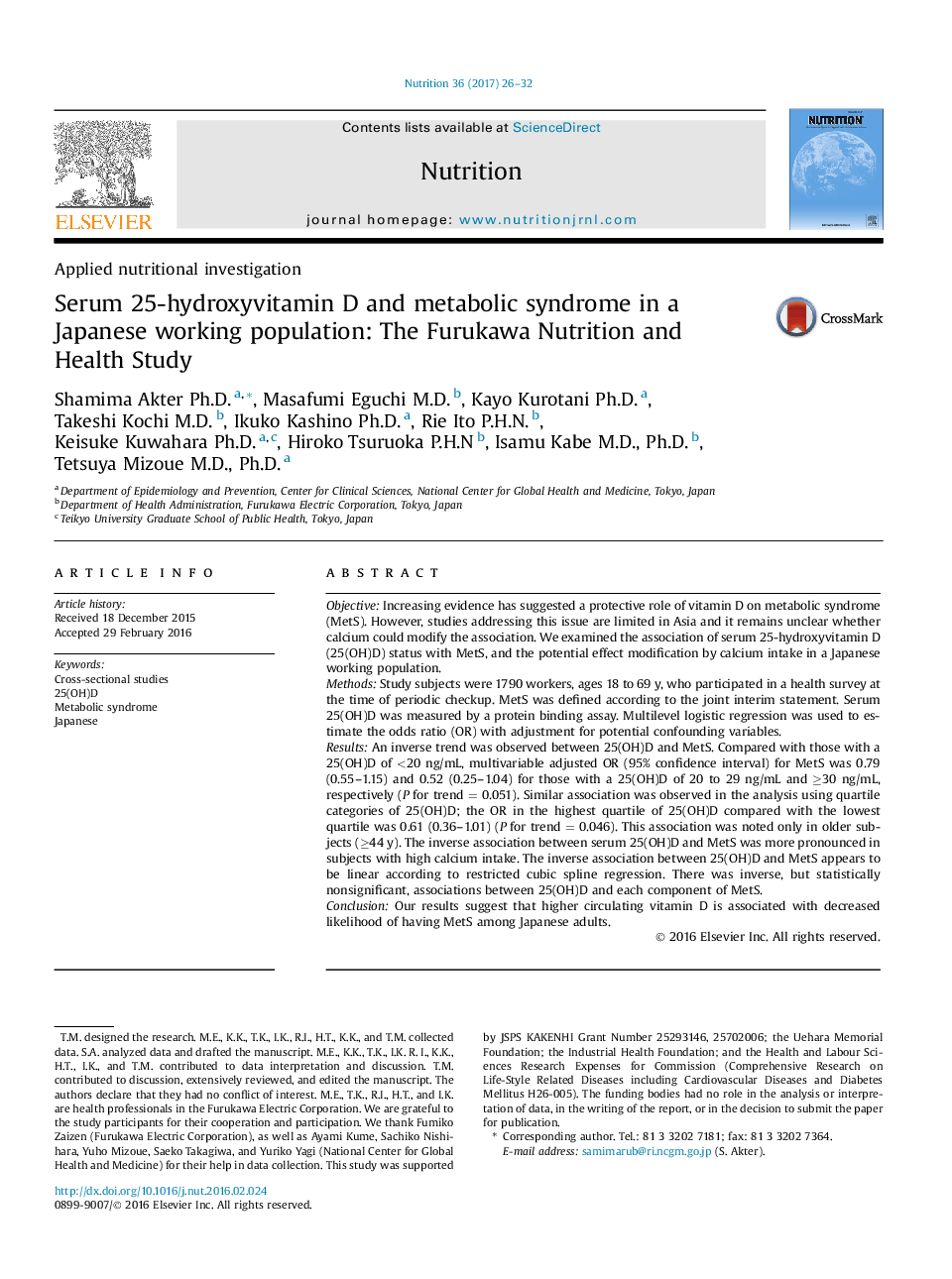| Article ID | Journal | Published Year | Pages | File Type |
|---|---|---|---|---|
| 5657031 | Nutrition | 2017 | 7 Pages |
â¢This study investigated the association between serum 25(OH)D and metabolic syndrome in a Japanese working population.â¢An inverse trend was observed between serum 25(OH)D and metabolic syndrome.â¢This inverse association was noted in older subjects (â¥44 y).â¢The inverse association was more pronounced among subjects with high calcium intake.
ObjectiveIncreasing evidence has suggested a protective role of vitamin D on metabolic syndrome (MetS). However, studies addressing this issue are limited in Asia and it remains unclear whether calcium could modify the association. We examined the association of serum 25-hydroxyvitamin D (25(OH)D) status with MetS, and the potential effect modification by calcium intake in a Japanese working population.MethodsStudy subjects were 1790 workers, ages 18 to 69 y, who participated in a health survey at the time of periodic checkup. MetS was defined according to the joint interim statement. Serum 25(OH)D was measured by a protein binding assay. Multilevel logistic regression was used to estimate the odds ratio (OR) with adjustment for potential confounding variables.ResultsAn inverse trend was observed between 25(OH)D and MetS. Compared with those with a 25(OH)D of <20 ng/mL, multivariable adjusted OR (95% confidence interval) for MetS was 0.79 (0.55-1.15) and 0.52 (0.25-1.04) for those with a 25(OH)D of 20 to 29 ng/mL and â¥30 ng/mL, respectively (P for trend = 0.051). Similar association was observed in the analysis using quartile categories of 25(OH)D; the OR in the highest quartile of 25(OH)D compared with the lowest quartile was 0.61 (0.36-1.01) (P for trend = 0.046). This association was noted only in older subjects (â¥44 y). The inverse association between serum 25(OH)D and MetS was more pronounced in subjects with high calcium intake. The inverse association between 25(OH)D and MetS appears to be linear according to restricted cubic spline regression. There was inverse, but statistically nonsignificant, associations between 25(OH)D and each component of MetS.ConclusionOur results suggest that higher circulating vitamin D is associated with decreased likelihood of having MetS among Japanese adults.
